#edward j. nugent
Explore tagged Tumblr posts
Text



2 notes
·
View notes
Text

Edward J. Nugent-Bing Crosby-Miriam Hopkins "Fuga apasionada" (She loves me not) 1934, de Elliot Nugent.
1 note
·
View note
Text

Eddie J. Nugent and Dorothy Granger in Easy on the Eyes (1933)
Nugent was a brash "juvenile" who starred in several 1933 Sennett talkie shorts including Easy on the Eyes. Born in New York City the son of a stage manager, Nugent played in Sid Grauman's prologues, entering Hollywood as a laborer and stuntman at M-G-M. He became a gagman there before being picked to play the comic relief role in Our Dancing Daughters (1928) with Joan Crawford. Nugent again supported Crawford in The Duke Steps Out (1929) and Dorothy Mackaill in Bright Lights (1930), and appeared in a couple of shorts in the "Hollywood Girls" series for Ideal Comedies Educational under Roscoe "William Goodrich" Arbuckle's direction in 1931. Sound features included a supporting part in 42nd Street (1933), as well as College Humor (1933) with Burns and Allen, Ah Wilderness! (1935) and Meet the Mayor (1938). Nugent then left Hollywood for Broadway. He produced the play "On Our Way" (1946), starred in "The Front Page" in Chicago (1947) and served on the board of Actor's Equity in 1948. Nugent then became a television director on early New York-based programs like "Four Star Talent Search" and "Arthur Murray Party." He died at 90 in New York City.
-Walker, B.E., 2010, Mack Sennett's Fun Factory, McFarland&Company, Inc., Publishers, pp.533~534
#eddie j nugent#eddie j. nugent#edward j nugent#edward j. nugent#easy on the eyes 1933#dorothy granger#책 인용
1 note
·
View note
Photo


DICK POWELL, RUBY KEELER and EDWARD J. NUGENT in 42nd STREET | dir. LLOYD BACON (1933)
#1930's cinema#1930's#1933#oldhollywood#oldhollywoodedit#filmblr#classicfilmblr#romanceedit#precode#musicaledit#broadway#great depression#busby berkeley#42nd street#dick powell#ruby keeler#edward j nugent
11 notes
·
View notes
Text
The Double Feature: Salon Scandals

Our theme for tonight’s double feature is the 1930s beauty salon. The salon was oft-used cinematic setting for feminine feuds to fester, infidelities to be revealed, and close friendships to grow or falter. The pseudo-privacy afforded to patrons by the flapping ears of their beauticians provide ample opportunity for the proliferation of exposition, gossip, and rumors. Films set in the salon also serve as real life insight into what gender politics and social roles were promoted by the studios and censors of the era, and we will briefly visit that subject after we enjoy tonight’s offerings.
Tonight’s Bill
Hair-Raising Hare (Merrie Melodies, 1946, Warner Bros)
Mel Blanc, dir. Chuck Jones (as. Charles M. Jones)

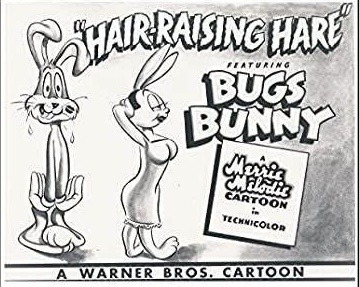

Beguiled by a curvaceous mechanical rabbit, Bugs is lured into a mad scientist’s castle. The mad scientist—a Lorre caricature—intends to turn Bugs into dinner for his hairy monster, Gossamer. Bugs attempts escape in typical Bugs fashion, most famously impersonating a manicurist who’s INTereSTed in INTereSTin’ people. 💅
This short is a bonafide classic that I’m sure many of you have seen before. The beautician bit (similarly portrayed in 1952’s Water, Water Every Hare) is one of Bug’s funniest and a familiar sight to movie-goers at the time. The chatty, heavily accented manicurist or hairdresser is a common motif in comedies of the era and gave many a character actress and wannabe starlet her 15 seconds of fame. (My Letterboxd rating)
Soup and Fish (Todd and Kelly, 1934, Hal Roach/MGM)
Thelma Todd, Patsy Kelly, Billy Gilbert, Gladys Gale, dir. Gus Meins



Thelma and Patsy are hairdressers in a fancy salon. When a wealthy client mistakenly invites them to her evening soirée, the women are tasked with entertaining guest-of-honor Count Gustav. Thelma sets out to romance the count, while Patsy tries out some of her “tricks” on him. Thankfully, the count appears better humored than the party’s staff…
This is the fifth entry in the Thelma Todd-Patsy Kelly partnership that would end far too soon with Thelma’s untimely passing in late 1935. What a shame to conclude in such tragedy, doubly so now that Todd and Kelly aren’t well remembered as a comedy duo—neither are the preceding Pitts and Todd, nor the succeeding Kelly and Kelton, Kelly and Roberti, or Pitts and Kelly. Regardless of being denied their proper place in our cultural memory, Patsy and Thelma had chops and chemistry that made even predictable gags funny. (My Letterboxd rating)
Daily Beauty Rituals (1937, Brown-Nagle/Educational Films Corp. of Am.)
Constance Bennett, dir. unknown

Glamorous star Constance Bennett shares her daily skincare and makeup routine with the women of the audience, for “to be beautiful and natural is the birthright of every woman.”
An interesting routine that I’d be curious to see someone follow to the letter as a test… and don’t you dare be one of those lazy cream rouge antis. In case you need something other than beautiful Constance in color to pay attention to, RiffTrax provides great commentary here.
Visit a 1930’s Beauty Salon (c. 1938, posted 2020, glamourdaze)

NEWSREEL: AI colorized and enhanced footage of Pattons and beauticians inside Caroll’s Beauty Shop in Hamtramck, MI, circa 1938.
Peek those torture devices! They’re kinda calling to me, though…
Beauty for Sale (1933, MGM)
Madge Evans, Una Merkel, Otto Kruger, Alice Brady, dir. Richard Boleslawski



An innocent but game woman obtains a job at a beauty salon for wealthy patrons, alongside hardboiled and streetwise beauticians seeking love and security in an unforgiving world.
Beauty for Sale is a severely underrated Pre-Code with bite! The salon herein sets the stage for complicated—often illicit—romantic entanglements. Positions at Madame Sonia’s (well-cast Hedda Hopper) salon provide opportunities for love and a change in economic status at the risk of losing one’s sense of self, as played out in the lives of three women:
Letty Lawson, the small-town woman trying to make it in the big city, playing the game while preserving as much of her moral compass as she can. The game gets complicated, however, when she falls for lawyer Mr. Sherwood (Otto Kruger), who is eager to progress their relationship despite being unhappily married to one of Madame Sonia’s top clients (Alice Brady). Meanwhile, circumstances pressure Letty to leave the lurid salon life to settle down with Bill Merrick (Edward J. Nugent), brother of her best friend. Portrayed by confident—and yes, adorable—Madge Evans.

Carol Merrick, Letty’s wised-up best friend and confidante. Carol is involved with an older sugar daddy (Charley Grapewin), knowing better than to fall prey to feelings again after having been abandoned by her only love, a married man who went back to his wife. Una Merkel is in top form.
Jane, a kind and meek beautician secretly in a relationship with Madame Sonia’s son, Burt (Phillips Holmes). Madame Sonia would never allow her precious boy to date an employee, but Jane and Burt don’t let that deter them—as long as it’s in private. As their relationship develops, they must decide how to proceed in public. Is this real love, or is Jane being strung along? Florine McKinney didn’t have many opportunities as a leading woman or secondary lead beyond 1935 or so, but she makes the most of her truncated screentime here thanks to her light touch and sensitivity. (My Letterboxd rating)


The Women (1939, MGM)
Norma Shearer, Joan Crawford, Rosalind Russell, Mary Boland, Paulette Goddard, Joan Fontaine, dir. George Cukor



After news of her husband’s ongoing affair spreads like wildfire through the patrons of a salon, a woman decides to go to Reno for a divorce, finding camaraderie with a group of soon-to-be former wives involved in thorny relationships.
MGM’s latest foray into beauty salon drama was a smashing success. The Women, based on a stage play of the same name and concept, garnered resounding praise in 1939 and is one of studio’s best remembered treasures, no doubt due to the behemoth star-power of its all-women cast. Besides the leads noted above, you will recognize a slew of other notables in minor roles or cameo appearances, including Virginia Wiedler, Ruth Hussey, Virginia Grey, and Hedda Hopper. Marjorie Main, Phyllis Povah, and Mary Cecil recreate their roles from the original play.
Mary Haines (Norma Shearer) is happily married to Stephen. During a manicure, however, Mary’s cousin Sylvia Fowler (Rosalind Russell) finds out that Stephen is engaged in an affair with Crystal Allen (Joan Crawford), a known homewrecker. Instead of letting her down easy, Sylvia arranges for Mary to see the manicurist so the juicy gossip is revealed via salon (thanks, cuz 😒). Mary intends to work it out with her philanderer until she meets Crystal and everyone in her social circle finds out, thanks to Sylvia and Edith (Phyllis Povah). This prompts Mary to finally put her foot down and divorce Stephen.
She sets out for a ranch in Reno, where she will stay the required 6 weeks until her quickie divorce is finalized. There she meets a countess (Mary Boland) divorcing her umpteenth husband to marry her nextteenth husband (a cowboy, this time!), chorus girl Miriam (Paulette Goddard) whose intentions have been set on Sylvia’s husband, and sensitive Peggy (Joan Fontaine) being pressured to divorce her new husband by the gossip mill.
Although Mary has second thoughts about the divorce, she discovers that he has already married Crystal before she can return to him (what a charmer that Stephen is). The story picks up a couple years later with things going about as well as you’d expect for all involved parties, but I’ll spare you more spoilers and let you see for yourself how the intrigue resolves.

Analysis
While both films have their own merits and are well worth any moviegoer’s time, I’d like to briefly discuss how the films frame sociopolitical attitudes about the "women's picture" and modern relationships broadly. Turn your attention to the respective taglines of Beauty for Sale and The Women: “Which Type of Girl Do Men Marry?” and “It’s All About Men.” These taglines, by nature of their principal positions on the advertisement posters, represent what the studios thought made these films appealing and sellable, namely that women’s lives can and should be portrayed as revolving around men—not at all unlike Old Hollywood’s real-life patriarchal and predatory attitude toward its actresses (TW: descriptions of rape, abuse). Tonight’s double feature, however, reflects two clashing factions acting within a system of onscreen female exploitation: One confirming stereotypes and promoting their acceptance and one managing to assert a spoonful of autonomy by working around them.
Despite the powerful group of screen goddesses blinding audiences with their talent and wit and glitz, The Women remains precisely what the poster says it is: a movie about men, starring women. The conflicts are about men. Most of the conversations are about men. The women get into rows and backstab one another over men. Their thoughts and actions are guided and defined by men who, in Mary’s case at the very least, don’t deserve a second thought, let alone a second chance. But that second chance is exactly what they get, and the women learn to like it—even fight for it, tooth and Jungle Red nail. In 1939, the message is clear: The object of a woman’s desire, the ruler of her heart, and the light of her life is Man… so says the studio mogul, the producer, the ad man, the censors, et al.
On the face of it, Beauty for Sale is hardly different. It’s a story about women being used and abused by men individually, or by a male-centric system. But this B picture wrests back some control over the prevailing stereotypes and narratives—you were allowed to do that in 1933, Joseph Breen be damned. Letty decides to make her own way instead of marrying the first man that comes along, wrestling with the potential consequences and harm she causes all the while. Carol finagles men for monetary gain, which for her is regrettable but preferable to falling for another man destined to jilt her. Jane, sweet Jane, has the hardest time of any, but is a girl’s girl through it all and to the last. Beauty for Sale’s leading trio forge their own paths in a system designed to keep them from doing so successfully—sometimes with wisdom and other times by using and abusing in kind. In this way, the aforementioned tagline doesn’t even make much sense; this film isn’t really about marriage. That’s why I prefer the alt tagline: “The Drama of Three Footloose Daughters of a Modern Skin Game.” This one recognizes that the game is set up for these women to fail, and that they’re free to do as they please anyway. 1939 would be appalled.

Exit
One can little argue that the salon setting in the movie, with its obsessive focus on gossip, cattiness, and florid sex, is socially progressive or flattering to the perception of a modern woman. But for all its trappings and stereotypes, it does provide us with one of the few classic film spaces reserved almost exclusively for women—and what a wonderful avenue it opened to allow the glamor days’ finest talent to share the screen together and sneak in a few feminist sensibilities here and there.




Thanks for attending our first double feature! Make it a triple feature with 1939’s Beauty for the Asking, starring Lucille Ball as a boss babe face cream inventor and entrepreneur whose investor is the wife of her gold-digging ex fiancé. Then read some fan magazine articles featuring Florine McKinney here. You can learn more about the salon treatments given at Sydney's in The Women here. After all that taxing research, treat yourself to a day at Madame Brainey’s Cinema Salon on Letterboxd, where the only gossip allowed is about those INTereSTin’ movie stars from before our grandparents were born.
#classic film#classic hollywood#classic movies#old hollywood#old movies#bugs bunny#merrie melodies#hair-raising hare#mel blanc#thelma todd#patsy kelly#constance bennett#beauty for sale#madge evans#una merkel#florine mckinney#otto kruger#Alice brady#hedda hopper#phillip holmes#edward j nugent#the women#norma shearer#rosalind russell#joan crawford#paulette goddard#mary boland#joan fontaine#1930s#beauty salon
1 note
·
View note
Text

John Wayne, Virginia Cherrill, and Edward J. Nugent in Seymour Felix’s GIRLS DEMAND EXCITEMENT (1931)
14 notes
·
View notes
Photo
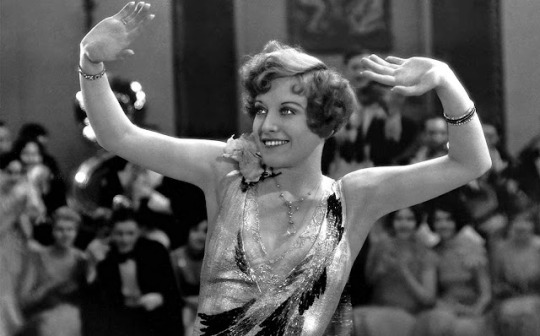
Joan Crawford in Our Dancing Daughters (Harry Beaumont, 1928)
Cast: Joan Crawford, Johnny Mack Brown, Nils Asther, Dorothy Sebastian, Anita Page, Kathlyn Williams, Edward R. Nugent, Dorothy Cumming, Huntley Gordon, Evelyn Hall, Sam De Grasse. Screenplay: Josephine Lovett; Marian Ainslee, Ruth Cummings (titles). Cinematography: George Barnes. Art direction: Cedric Gibbons. Film editing: William Hamilton. Music: William Axt. Diana (Joan Crawford) is a Good Girl who people think is a Bad Girl because she likes to dance the Charleston on tabletops. Ann (Anita Page) is a Bad Girl posing as a Good Girl to try to land a rich husband. Beatrice (Dorothy Sebastian) is a Good Girl trying to hide the fact that she used to be a Bad Girl from Norman (Nils Asther), the man she has fallen in love with. And so it goes, as Ann steals Ben (Johnny Mack Brown) away from Diana, and Beatrice confesses her past sins to Norman, who marries her but doesn't really trust her. This romantic melodrama was a big hit that established Crawford as a star. She's lively and funny and dances a mean Charleston -- a far cry from the long-suffering shoulder-padded Crawford of Mildred Pierce (Michael Curtiz, 1945) and the melodramas of her middle age, though we can see a hint of the Crawford to come when she squares off against Page, using her big eyes and lipsticked mouth as formidable weapons. The movie is semi-silent: It has a synchronized music track with some forgettable songs and occasional sound effects like the ring of a telephone and the knock on a door, and once there's a spoken line from a bandleader: "Come on, Miss Diane, strut your stuff." But most of the dialogue is confined to intertitles that tell us Diana has asked a boy to dance ("Wouldst fling a hoof with me?") or that Freddie (Edward J. Nugent) has asked Ann if she wants a drink ("Lí'l hot baby want a cool li'l sip?"). The Jazz Age was probably never like this, even at its height, which was several years earlier, but there is fun to be had here. The story, such as it is, was by Josephine Lovett, and those title cards were the work of Marian Ainslee and Ruth Cummings, who give it a mildly feminist spin: Despite the slut-shaming, the film is solidly on the side of the rights of women to have a good time. Lovett's story and George Barnes's cinematography were considered for Oscars -- there were no official nominations this year -- but lost out.
2 notes
·
View notes
Photo
Diana (Joan Crawford) is a Good Girl who people think is a Bad Girl because she likes to dance the Charleston on tabletops. Ann (Anita Page) is a Bad Girl posing as a Good Girl to try to land a rich husband. Beatrice (Dorothy Sebastian) is a Good Girl trying to hide the fact that she used to be a Bad Girl from Norman (Nils Asther), the man she has fallen in love with. And so it goes, as Ann steals Ben (Johnny Mack Brown) away from Diana, and Beatrice confesses her past sins to Norman, who marries her but doesn’t really trust her. This romantic melodrama was a big hit that established Crawford as a star. She’s lively and funny and dances a mean Charleston – a far cry from the long-suffering shoulder-padded Crawford of Mildred Pierce (Michael Curtiz, 1945) and the melodramas of her middle age, though we can see a hint of the Crawford to come when she squares off against Page, using her big eyes and lipsticked mouth as formidable weapons. The movie is semi-silent: It has a synchronized music track with some forgettable songs and occasional sound effects like the ring of a telephone and the knock on a door, and once there’s a spoken line from a bandleader: “Come on, Miss Diane, strut your stuff.” But most of the dialogue is confined to intertitles that tell us Diana has asked a boy to dance (“Wouldst fling a hoof with me?”) or that Freddie (Edward J. Nugent) has asked Ann if she wants a drink (“Lí'l hot baby want a cool li'l sip?”). The Jazz Age was probably never like this, even at its height, which was several years earlier, but there is fun to be had here. The story, such as it is, was by Josephine Lovett, and those title cards were the work of Marian Ainslee and Ruth Cummings, who give it a mildly feminist spin: Despite the slut-shaming, the film is solidly on the side of the rights of women to have a good time. Lovett’s story and George Barnes’s cinematography were considered for Oscars – there were no official nominations this year – but lost out.






Joan Crawford in the opening moments of Our Dancing Daughters, 1928
621 notes
·
View notes
Text
In 1978, a Kiss concert was an epoch-making event. For the three teen fans in Detroit Rock City getting tickets to the sold-out show becomes the focal point of their existence. They’ll do anything for tickets — compete in a strip club’s amateur-night contest, take on religious protesters, even rob a convenience store! Credits: TheMovieDb. Film Cast: Lex: Giuseppe Andrews Trip Hurudie: James DeBello Hawk: Edward Furlong Jeremiah ‘Jam’ Bruce: Sam Huntington Mrs. Bruce: Lin Shaye Beth Bumsteen: Melanie Lynskey Christine: Natasha Lyonne Amanda Finch: Shannon Tweed Barbara: Emmanuelle Chriqui Cashier: Kristin Booth Father Phillip McNulty: Joe Flaherty Chongo: Matthew G. Taylor Elvis: Miles Dougal Kenny: Nick Scotti Bobby: David Quane Mr. Stewart Bumsteen: Rodger Barton Mrs. Stewart Bumsteen: Kathryn Haggis Detroit Priest: David Gardner Little Kid: Cody Jones Study Hall Teacher: Joan Heney MC: Ron Jeremy Kiss: Gene Simmons Kiss: Paul Stanley Kiss: Ace Frehley Kiss: Peter Criss Scalper: Richard Hillman Guy in Red Track Suit (uncredited): Jason Biggs Beefy Guy #1: Kevin Corrigan Six Year Old #2: Ryan Letriard Beefy Guy #2: Steve Schirripa Ticket Taker: Julian Richings Film Crew: Casting: Valerie McCaffrey Editor: Mark Goldblatt Costume Design: Rosanna Norton Executive Producer: Michael De Luca Director of Photography: John R. Leonetti Original Music Composer: J. Peter Robinson Director: Adam Rifkin Production Design: Steve Hardie Writer: Carl V. Dupré Producer: Gene Simmons Executive Producer: Brian Witten Producer: Kathleen Haase Producer: Barry Levine Editor: Peter Schink Set Decoration: Carolyn A. Loucks Art Direction: Lucinda Zak Associate Producer: Tim Sullivan Stunt Coordinator: Alison Reid Co-Producer: Art Schaefer Movie Reviews: Wuchak: _**Great 70’s songs, sometimes amusing, but basically an insult to KISS fans**_ In 1978, four teenagers from Cleveland plan to go to a KISS concert in Detroit and have many misadventures reaching their goal. The four are played by Edward Furlong, Giuseppe Andrews, James DeBello and Sam Huntington. “Detroit Rock City” (1999) features great rock/metal from the 70s by KISS, AC/DC, Blue Oyster Cult, Van Halen, Sweet, Thin Lizzy, Nazareth, Styx, David Bowie, Cheap Trick, Black Sabbath, Ted Nugent, the Ramones, etc. There are some fun moments, but the tone is too over-the-top for its own good and the story isn’t very compelling. Couple this with some odious bathroom non-humor, a lack of attractive women beyond Natasha Lyonne and the negative one-dimensional depiction of the protagonists and you have a curiously disappointing teen flick. The focus on pot-obsessed dudes is disingenuous since Paul Stanley and Gene Simmons were never into the drug culture; their idea of a party was working hard creating music, performing, touring, making money and celebrating gorgeous women. Unsurprisingly, mind-blowingly beautiful females were always attracted to KISS and frequented their concerts; so were dynamic, talented males. I’m not saying pot-worshipping, denim-clad waifs weren’t an element of their fan base, but KISS devotees always involved WAY more than this. No wonder Paul Stanley lamented: “To call it a KISS movie does it a disservice, because it does a disservice to the KISS fans, which is what it’s really about.” The film runs 1 hour, 35 minutes, and was shot entirely in the Toronto area. GRADE: C-
1 note
·
View note
Video
The Stars Look Down (1940) | Michael Redgrave | Margaret Lockwood |
he Stars Look Down movie is a British film released in 1940. This classic film is based on A. J. Cronin's novel was written in 1935 with the same title. The film is about injustices in a mining town in North East England. Coal miners, who are led by Robert "Bob" Fenwick, vote to go on strike. The miners are refusing to work in a particular section of the mine. The reason is due to the great danger of flooding. Tensions rise as the strikers go hungry. Cast Michael Redgrave as David "Davey" Fenwick Margaret Lockwood as Jenny Sunley Emlyn Williams as Joe Gowlan Nancy Price as Martha Fenwick Allan Jeayes as Richard Barras Edward Rigby as Robert "Bob" Fenwick Linden Travers as Mrs. Laura Millington Cecil Parker as Stanley Millington Milton Rosmer as Harry Nugent, MP George Carney as Slogger Gowlan Ivor Barnard as Wept Olga Lindo as Mrs. Sunley Desmond Tester as Hughie Fenwick David Markham as Arthur Barras Aubrey Mallalieu as Hudspeth Kynaston Reeves as Strother Clive Baxter as Pat Reedy James Harcourt as Will Frederick Burtwell as Union Official Dorothy Hamilton as Mrs. Reedy Frank Atkinson as Miner David Horne as Mr. Wilkins Edmund Willard as Mr. Ramage Ben Williams as Harry Brace Scott Harrold as Schoolmaster Strother (as Scott Harold) You are invited to join the channel so that Mr. P can notify you when new videos are uploaded, https://www.youtube.com/@nrpsmovieclassics
0 notes
Photo

Our Dancing Daughters (1928)
20 notes
·
View notes
Photo

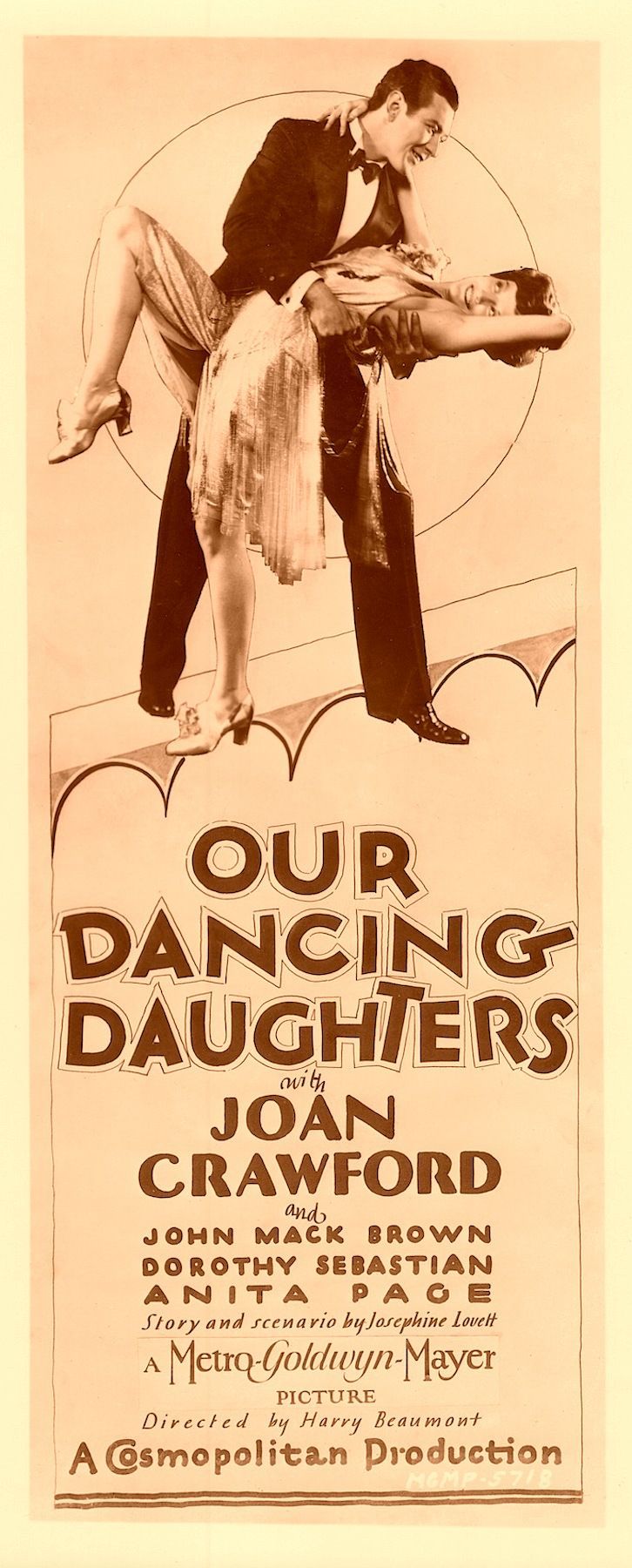
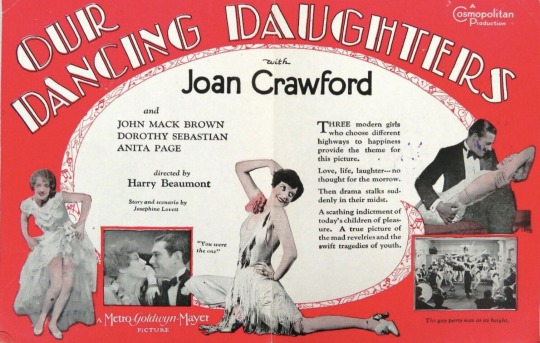

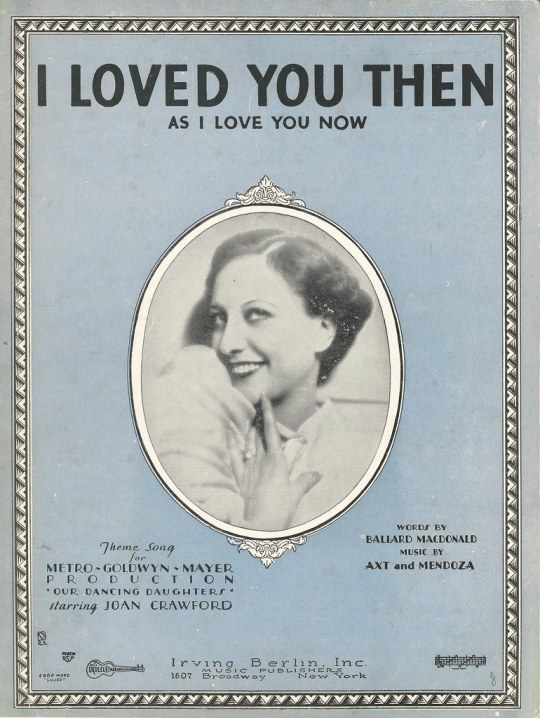

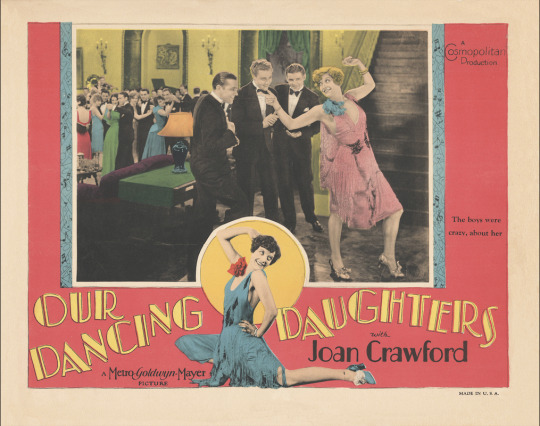

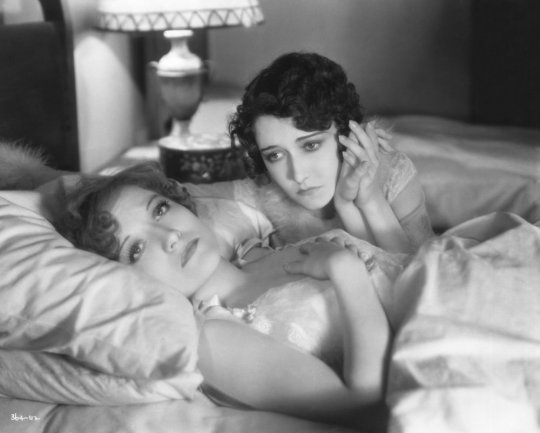

Our Dancing Daughters (1928) Harry Beaumont
December 5th 2022
#our dancing daughters#1928#harry beaumont#joan crawford#dorothy sebastian#anita page#edward j. nugent#edward nugent#johnny mack brown#nils asther#kathlyn williams
10 notes
·
View notes
Photo
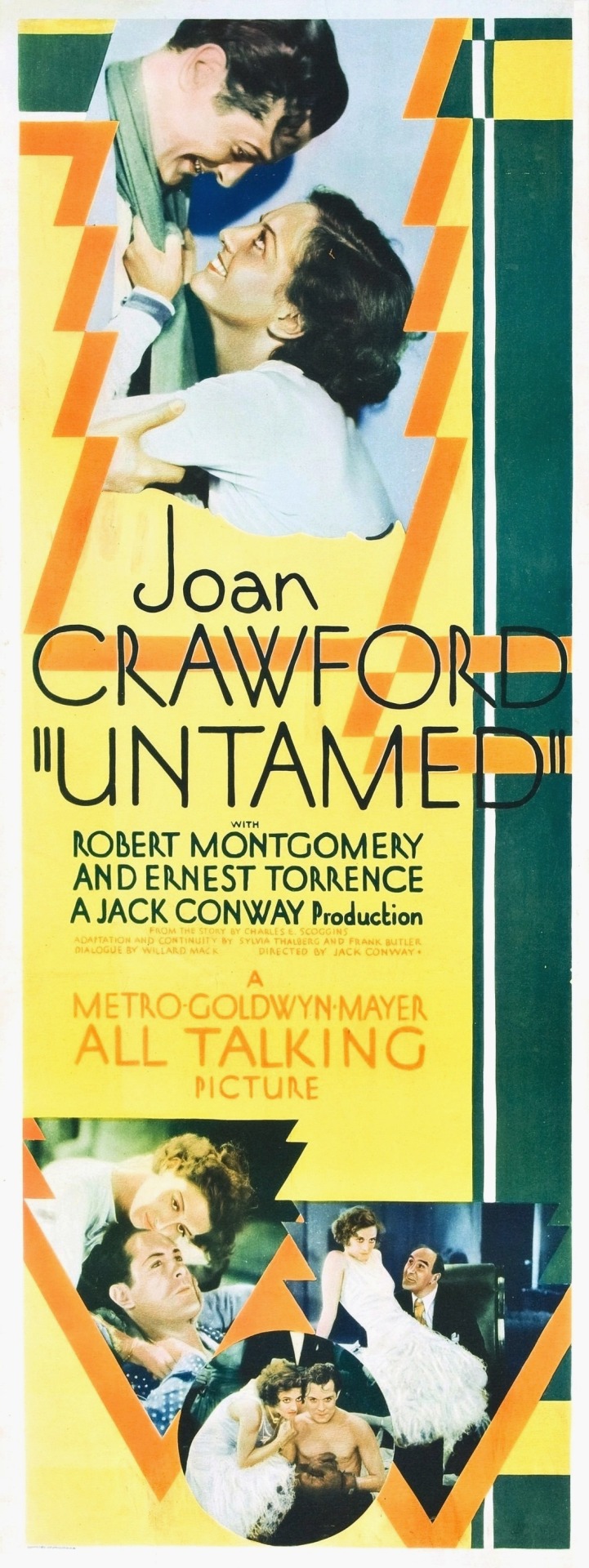
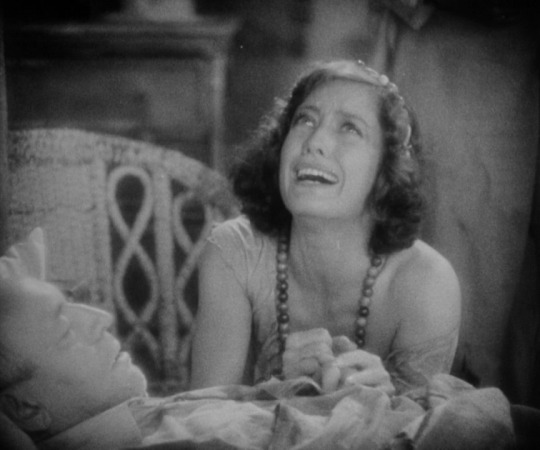
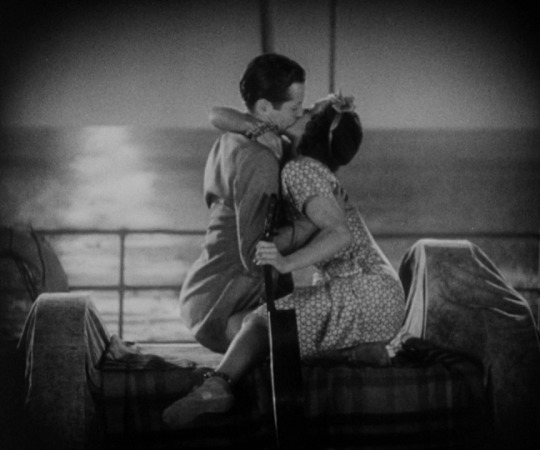
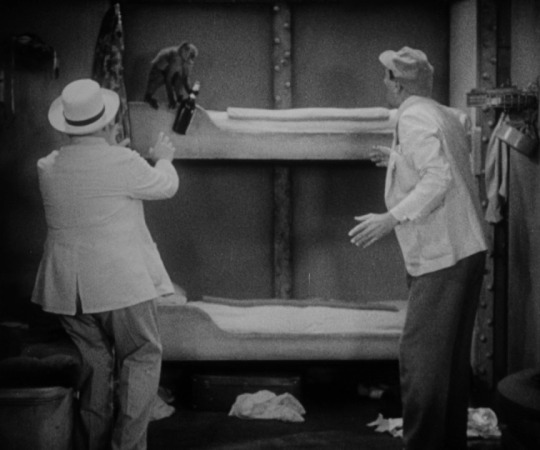
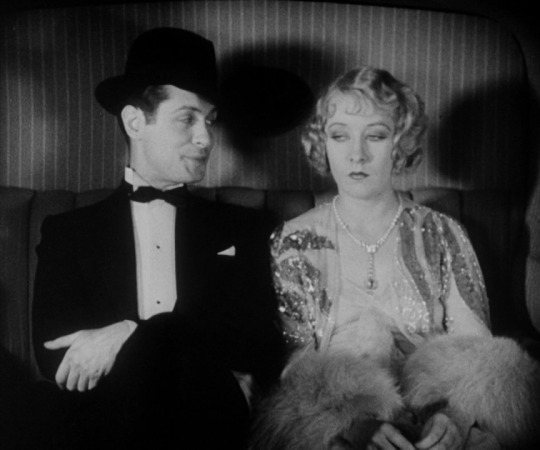
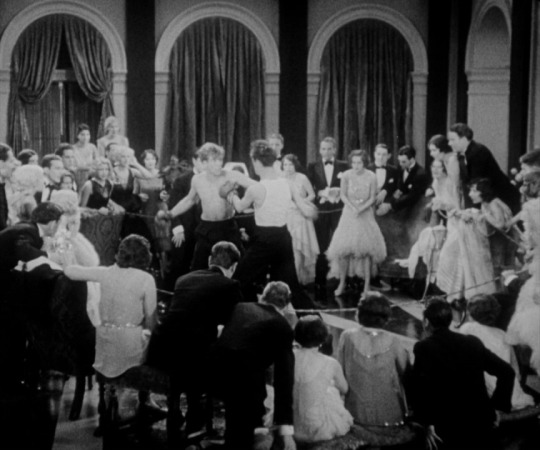

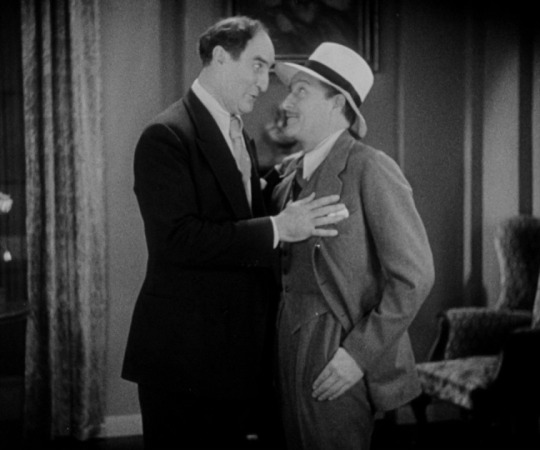
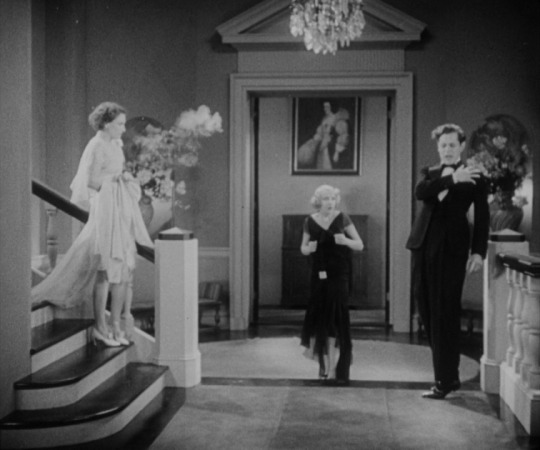
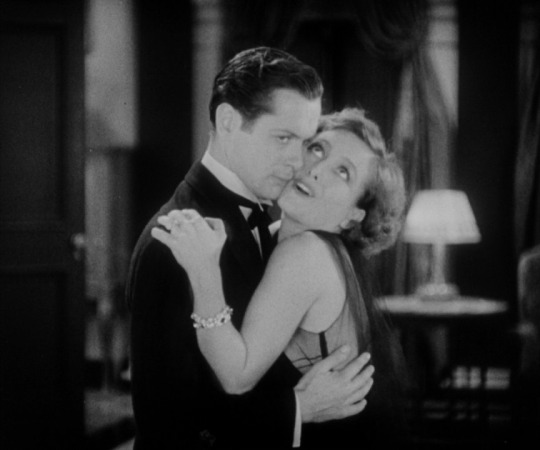
Untamed (1929, Jack Conway)
6/15/21
#Untamed#Joan Crawford#Robert Montgomery#Ernest Torrence#Holmes Herbert#John Miljan#Gwen Lee#Edward J. Nugent#Gertrude Astor#Don Terry#20s#drama#comedy#romance#orphans#South America#uncles#cultural differences#class differences#money#New York#heiresses#socialites#pre-code#inheritance#pride#early talkies
4 notes
·
View notes
Video
tumblr
42nd Street [Blu-ray]
#42nd street#lloyd bacon#warner baxter#bebe daniels#george brent#ruby keeler#guy kibbee#una merkel#ginger rogers#ned sparks#dick powell#allen jenkins#edward j. nugent#robert mcwade#george e. stone#harry akst#loretta andrews#joan barclay#muriel barrett#louise beavers#lynn browning#edna callahan#maxine cantway#margaret carthew#wallis clark#virginia dabney#mildred dixon#al dubin#ruth eddings#patricia ellis
8 notes
·
View notes
Text
"in summertime I find myself romanticising everything, even my solitude" summer + bittersweet things + solitude








Mary oliver
Alida Nugent
J. Krishnamurti
Reagen Myers
Edward Hopper
Allie Ray
Terry Pratchett
Morgan Parker
#web weaving#summer#lesbian#poetry#wlw#words#lgbt#gay#music#art#poem#Solitude#loneliness#lonely#Sad#Bitter#bittersweet
243 notes
·
View notes
Text
Cleaning out the DVR: Night Nurse (dir by William A. Wellman)
Cleaning out the DVR: Night Nurse (dir by William A. Wellman)
(Lisa is once again cleaning out her DVR! She recorded the 1931 film Night Nurse off of TCM on May 3rd.) Night Nurse follows the sordid nights and quiet days of Lora Hart (Barbara Stanwyck), a high school dropout who dreams of becoming a nurse. Fortunately, she manages to get hired on as a trainee nurse at a big city hospital.…
View On WordPress
#Allan Lane#Barbara Stanwyck#Blanche Friderici#Charles Winninger#Charlotte Merriam#Clark Gable#Edward J. Nugent#Film#Joan Blondell#Lisa Marie Bowman#movie#Night Nurse#Ralf Harolde#review#Vera Lewis#Walter MacGrail#William Wellman
0 notes